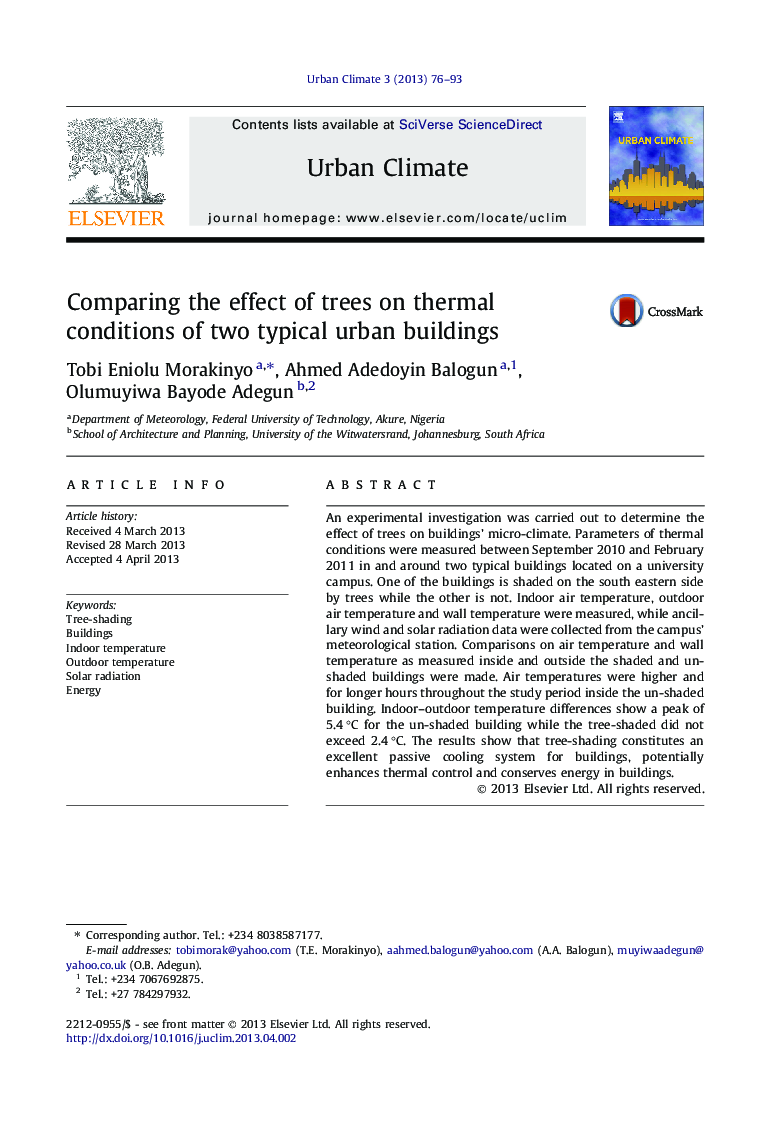| Article ID | Journal | Published Year | Pages | File Type |
|---|---|---|---|---|
| 143757 | Urban Climate | 2013 | 18 Pages |
•Two typical buildings with and without tree shades are studied.•We examine thermal conditions inside and outside both buildings.•Temperature is higher and for longer hours in the un-shaded building.•Trees (vegetation) enhances thermal comfort and helps to conserve energy in urban buildings.
An experimental investigation was carried out to determine the effect of trees on buildings' micro-climate. Parameters of thermal conditions were measured between September 2010 and February 2011 in and around two typical buildings located on a university campus. One of the buildings is shaded on the south eastern side by trees while the other is not. Indoor air temperature, outdoor air temperature and wall temperature were measured, while ancillary wind and solar radiation data were collected from the campus’ meteorological station. Comparisons on air temperature and wall temperature as measured inside and outside the shaded and un-shaded buildings were made. Air temperatures were higher and for longer hours throughout the study period inside the un-shaded building. Indoor–outdoor temperature differences show a peak of 5.4 °C for the un-shaded building while the tree-shaded did not exceed 2.4 °C. The results show that tree-shading constitutes an excellent passive cooling system for buildings, potentially enhances thermal control and conserves energy in buildings.
